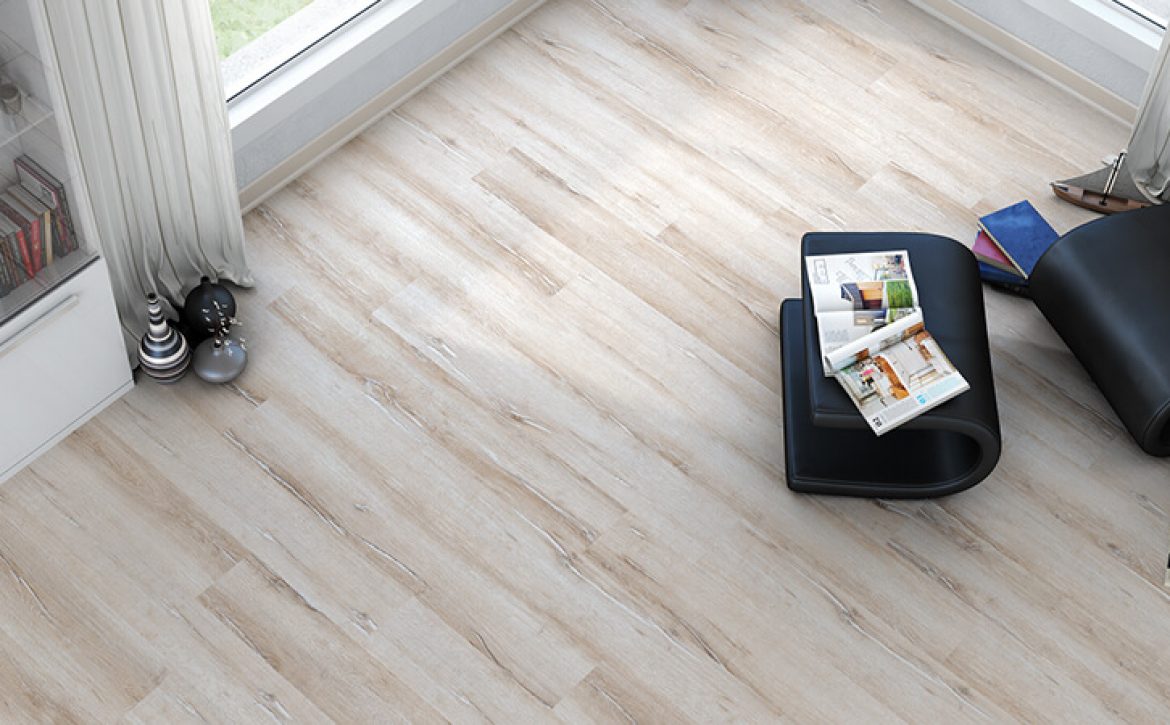
Installing laminate flooring is child's play. However, the important thing in this context is to prepare all materials and process steps well. Below, you will find a step-by-step guide for installing laminate flooring, along with a checklist to make the preparations easier for you.
There are generally three options for installing laminate flooring:
Glue-free, quick installation
Installation with Clickguard or a similar joint sealing material, which provides continuous protection against moisture from above. However, the flooring can still be removed and reinstalled.
Installation with glue, which also offers permanent protection against moisture. However, the process is more labor-intensive, and the flooring cannot be removed and reinstalled.
First, you should clean the subfloor where you plan to install Krono Original® laminate flooring, as not every laminate flooring is suitable for all types of subfloors.
Installing Laminate Flooring on Screed
The subfloor must be completely even, dry, clean, and load-bearing. Any unevenness greater than three millimeters over a one-meter distance must be ground down and primed. A PE-foil must be used as a moisture barrier.
Installing Laminate Flooring on Floorboards
Secure any loose floorboards and level uneven spots to create a firm and even subfloor. Lay Krono Original® laminate flooring perpendicular to the direction of the floorboards. PE-foil should not be used on wooden subfloors.
Installing Laminate Flooring on PVC or Linoleum Floors
You cannot install laminate flooring over such surfaces. These floor coverings must be completely removed before installing laminate flooring.
Installing Laminate Flooring on Subfloors with Hot Water and Modern Electric Underfloor Heating Systems
For dry heating processes, please consult a trusted heating system specialist, who will know the appropriate specifications and required protocols. A surface temperature of 25 degrees Celsius is recommended, but it should never exceed 28 degrees Celsius. Existing floor coverings must be removed.
Preparation and Material Checklist
Before Installing Laminate Flooring
Store the packages under the same climatic conditions as during installation.
The ideal room climate for installation and long-term durability is approximately 20 degrees Celsius with a relative humidity between 50% and 70%.
The subfloor must be even, dry, clean, and load-bearing.
When installing over mineral-based subfloors such as concrete, cement screed, anhydrite screed, or natural stone tiles, measure the moisture content before installation. The screed layer must not exceed the following moisture limits:
- Cement screed: Max. 1.8% CM if underfloor heating is present; max. 2% CM if there is no underfloor heating.
- Anhydrite screed: Max. 0.3% CM if underfloor heating is present; max. 0.5% CM if there is no underfloor heating.
To provide moisture protection on mineral-based subfloors, lay a vapor barrier (PE-foil) in a tub-like manner, overlapping the edges by 20 cm and securing them with adhesive tape.
Carpet is not a suitable subfloor. Completely remove all carpet remnants before installation. Laminate flooring is installed as a floating floor and must not be fixed to the subfloor.
If no impact sound insulation is used in the flooring, apply a 2 mm thick PE foam underlay or another suitable underlayer to dampen walking noise.
Lay the underlayer parallel to the panels.
Opened packages must be used immediately.
Ensure the Following Tools Are Readily Available When Installing Krono Original® Laminate Flooring:
Spacer wedges
Circular saw with a carbide-tipped blade, hole saw
Miter saw for undercutting door frames
Folding ruler, pencil
Installation assistant
Impact sound insulation layer (for floors without built-in insulation)
Checklist: Materials and Accessories for Installing Laminate Flooring
Precise room measurements
Krono Original® laminate flooring
Clickguard / One tube is sufficient for ten square meters of laminate flooring.
Skirting boards
Leveling, transition, and finishing profiles
Fixing clips (30 per pack of Krono Original® flooring)
Vapor barrier (PE-foil)
Impact sound insulation material
Depending on conditions, consider using impact sound insulation material and Clickguard or a similar joint sealing material.
Residual Moisture
The screed layer must not exceed the following residual moisture limits:
Cement screed: Max. 1.8% CM if underfloor heating is present; max. 2% CM if there is no underfloor heating.
Anhydrite screed: Max. 0.3% CM if underfloor heating is present; max. 0.5% CM if there is no underfloor heating.



